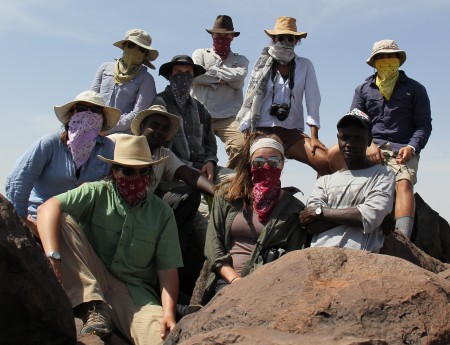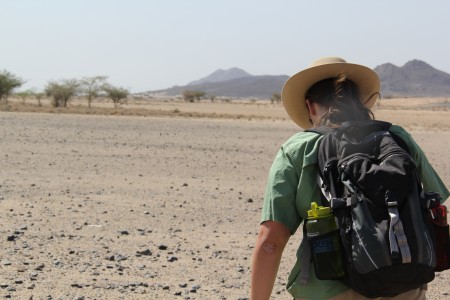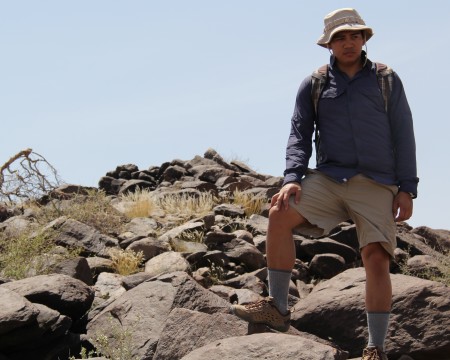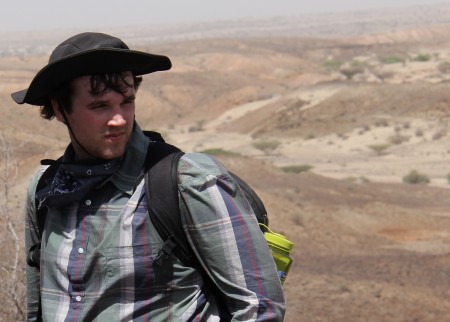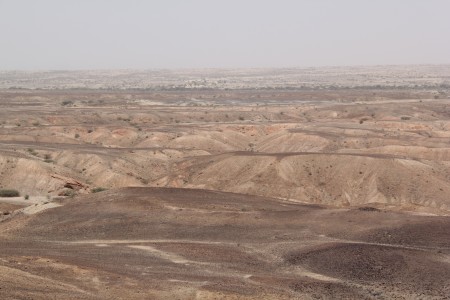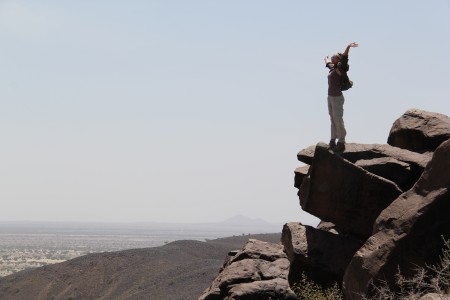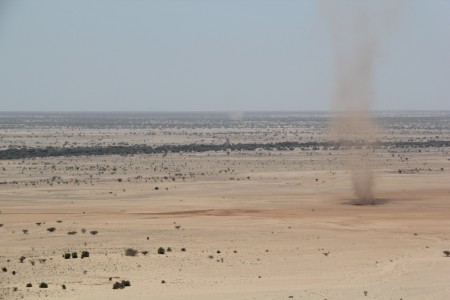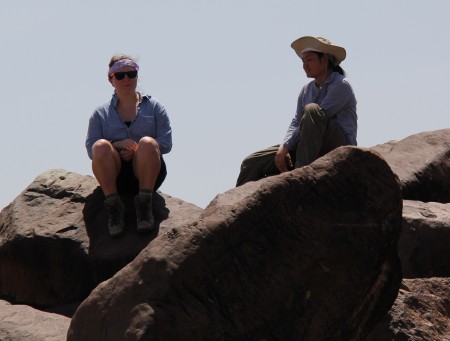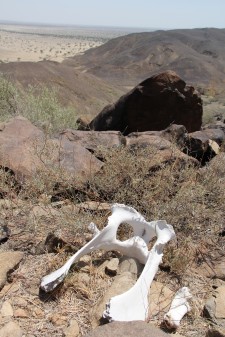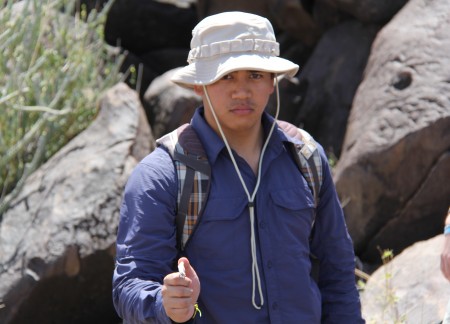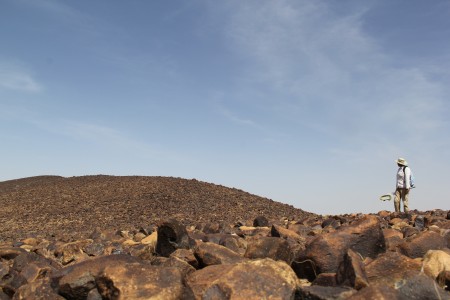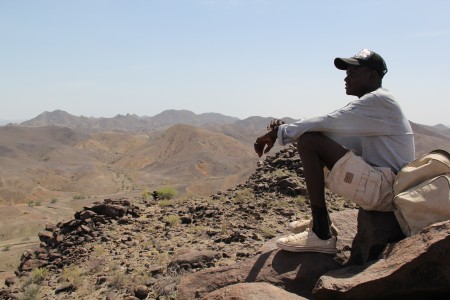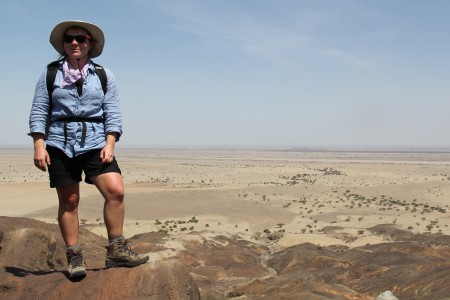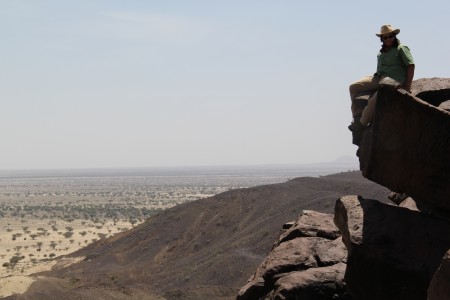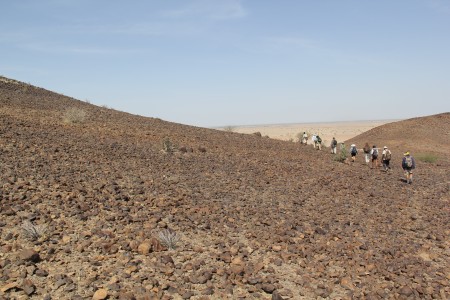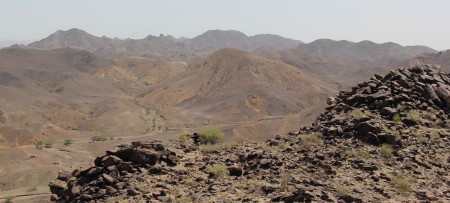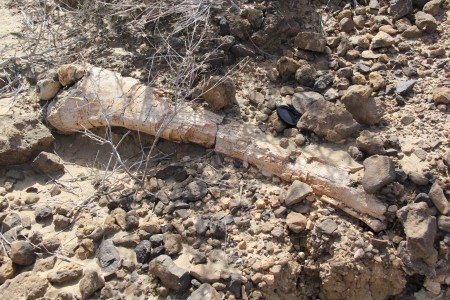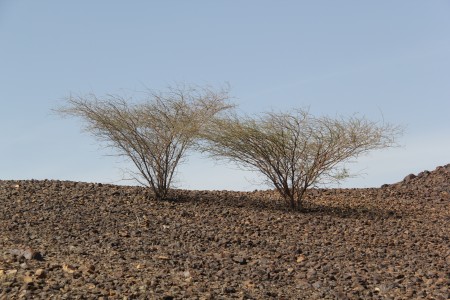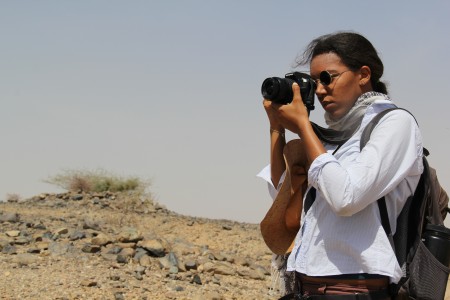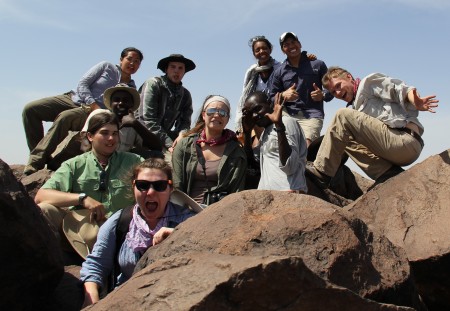Because we didn’t get enough time in the sun the previous week, a group of students decided to join Dr. Dino Martins on a hike through the Napadet Hills on our Sunday off from coursework. The excursion promised to be a warm 15km topped with a climb up the rocky hills. The reward would be an expansive view of the desert, river, and fossiliferous badlands.
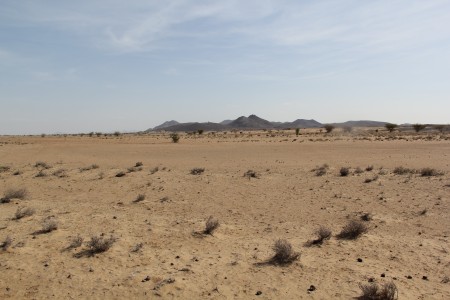
The Napadet Hills, dimly visible from camp on a clear day, arise from the flat expanse of the desert and scrub we’ve all grown accustomed to.
We set out early Sunday morning, packed onto padded benches bolted to the bed of a Land Rover. We motored across the desert, using bandanas to protect our faces from the dust kicked up by the truck. We looked like a gang of train robbers trying to get the jump on the Pinkertons.
The hills loom dramatically over the flat expanse of desert at their feet, a vast outcrop of volcanic basalt providing a vantage point to survey the surrounding grassland. Next week we’ll begin the Geology course module with Dr. Craig Feibel and we’ll all understand the history of these volcanic hills a little better.
A camel skeleton was strewn across the saddle between two peaks. According to Dr. Martins, the remains have been lying in the spot for at least four years. The dispersal of bones and their slow breakdown make a perfect taphonomic experiment (taphonomy being the study of how remains break down and eventually enter the fossil record…but more on that in a few weeks) and an opportunity to learn a little more about mammalian herbivore morphology.
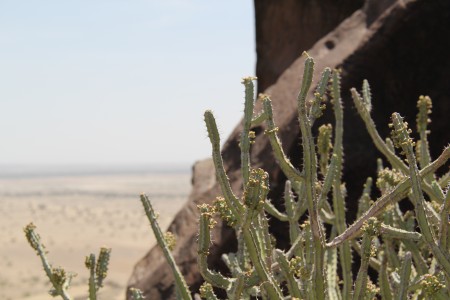
The desert adapted, cactus-like euphorbes cling to the exposed rock, an exhibition of adaptation in action.
After lunch on the peak of on of the Napadet Hills, we turned downslope to hike back to the Land Rovers. On the way off the final slope, we took a detour through a series of gullies carved into the sandstone. Fragments of bone littered the ground. Old bone. Fossilized crocodile scutes, and fragments of mammalian long bones.
Dr. Martins and Francis announced there was an elephant in the area. We spread out to find its remains. Tim was the first to spot the massive leg bone nestled in the rock. Nearby fragments of rhino teeth and horse molars conjured up a grassier, more verdant landscape 3.5 million years ago, supporting a variety of large mammals no longer found in the area.
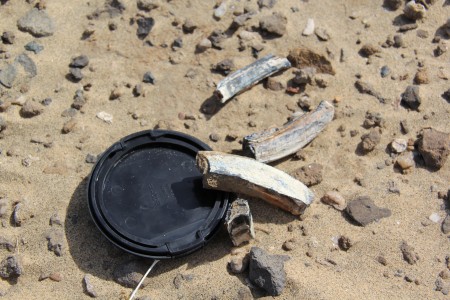
Isolated horse teeth suggests a lush, expansive grassland once blanketed the arid landscape. Horse feathers, on the other hand, are rarely fossilized.
After a hot return across the flat, arid scrubland we guzzled down our water and sought a little shade and a light breeze before piling back into the truck to return to TBI.
Some people may have had a lazy Sunday watching football. Our lazy Sunday took us above the desert for a sweeping view over the sand and back through time for a glimpse of the stories fossils and geology will reveal over the next few weeks.

